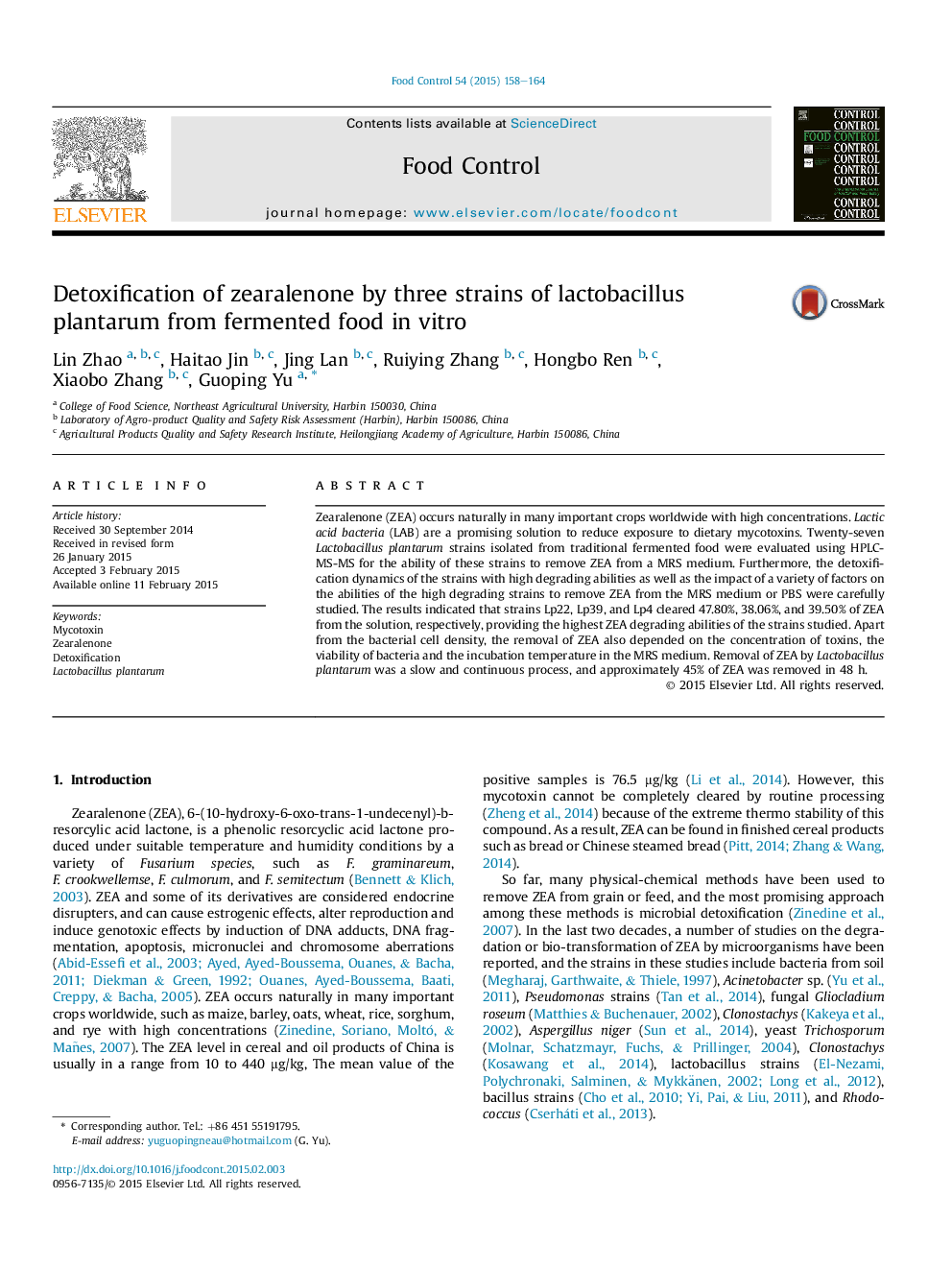| Article ID | Journal | Published Year | Pages | File Type |
|---|---|---|---|---|
| 6390843 | Food Control | 2015 | 7 Pages |
Abstract
Zearalenone (ZEA) occurs naturally in many important crops worldwide with high concentrations. Lactic acid bacteria (LAB) are a promising solution to reduce exposure to dietary mycotoxins. Twenty-seven Lactobacillus plantarum strains isolated from traditional fermented food were evaluated using HPLC-MS-MS for the ability of these strains to remove ZEA from a MRS medium. Furthermore, the detoxification dynamics of the strains with high degrading abilities as well as the impact of a variety of factors on the abilities of the high degrading strains to remove ZEA from the MRS medium or PBS were carefully studied. The results indicated that strains Lp22, Lp39, and Lp4 cleared 47.80%, 38.06%, and 39.50% of ZEA from the solution, respectively, providing the highest ZEA degrading abilities of the strains studied. Apart from the bacterial cell density, the removal of ZEA also depended on the concentration of toxins, the viability of bacteria and the incubation temperature in the MRS medium. Removal of ZEA by Lactobacillus plantarum was a slow and continuous process, and approximately 45% of ZEA was removed in 48Â h.
Related Topics
Life Sciences
Agricultural and Biological Sciences
Food Science
Authors
Lin Zhao, Haitao Jin, Jing Lan, Ruiying Zhang, Hongbo Ren, Xiaobo Zhang, Guoping Yu,
